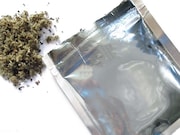Coma and/or CNS depression, seizures more common with single-drug synthetic cannabinoid exposure
MONDAY, July 8, 2019 (HealthDay News) — Synthetic cannabinoid (SC) exposure is associated with increased odds of neuropsychiatric morbidity versus cannabis exposure among adolescents presenting to the emergency department, according to a study published online July 8 in Pediatrics.
Sarah Ann R. Anderson, M.D., Ph.D., from the Columbia University Herbert and Florence Irving Medical Center in New York City, and colleagues reviewed a multicenter registry of clinical information prospectively collected by medical toxicologists for adolescents presenting to the emergency department after SC or cannabis exposure from 2010 through 2018. Correlations between drug exposures and neuropsychiatric symptoms and/or signs were measured.
The researchers found that compared with adolescents presenting with cannabis-only exposure (86 patients), those presenting to the emergency department with SC-only exposure (107 patients) had higher odds of coma and/or central nervous system depression (odds ratio, 3.42) and seizures (odds ratio, 3.89). Compared with cannabis-only exposure, SC-only drug exposure correlated with reduced odds of agitation (odds ratio, 0.18). However, individuals with SC-polydrug exposures (38 patients) had higher odds of agitation and seizures than those with cannabis-polydrug exposures (117 patients; odds ratios, 3.11 and 4.8, respectively).
“Our results contribute additional insight to a specific acute neuropsychiatric toxicity profile of SC exposures in adolescent patients,” the authors write.
Copyright © 2019 HealthDay. All rights reserved.








